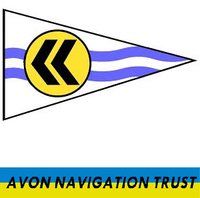


Local Sponsors
-
Avon Navigation Trust
Mill Wharf, Mill Lane Wyre Piddle WR10 2JF
The navigable river Avon runs from Alveston Weir above Stratford-upon Avon, for 47 miles, winding it's way through the Warwickshire, Worcestershire, and Gloucestershire countryside, down to Tewkesbury where it joins the river Severn.
-
The Severn Rivers Trust
Unit 3, Hope House Farm Barns, Hope House Lane, Martley. WR6 6QF
An independent environmental charity established to secure the preservation, protection, development and improvement of the rivers, streams, watercourses and water bodies in the Severn catchment.
More information
Many thanks to Avon Navigation Trust for facilitating this camera's location and capitally funding its installation. The Upper Avon Navigation Trust and the Lower Avon Navigation Trust amalgamated in 2009 to provide one continuous navigation authority on the river, the Avon Navigation Trust.
The Trust is a charitable organization that primarily relies on revenue generated from tolls for boat licenses. It does not receive any financial support from central or local government authorities. Wyre Piddle, situated in the Wychavon district of Worcestershire, England, is a village and civil parish. Nestled along the banks of the River Avon, it is located near the confluence point where the Piddle Brook joins the river. Wyre Piddle finds itself positioned between the towns of Evesham and Pershore.The area has witnessed noteworthy archaeological excavations, revealing signs of occupation during the late Iron Age and Roman periods. Additionally, evidence of an enclosed pastoral settlement has been uncovered, displaying four distinct phases of habitation dating back to the Middle Iron Age. Notably, a valuable hoard comprising 219 silver coins was discovered in the vicinity in 1967. The coins span a period from as early as 1280 to 1467, providing insights into the historical context of the region.Wyre Piddle holds significance as the birthplace of Claude Choules, the last surviving male veteran of World War I. Born on March 3, 1901, in Pershore, Choules resided in Wyre Piddle before relocating to Australia in 1926. He passed away on May 5, 2011, in Perth, Western Australia, at the impressive age of 110 years.In summary, the Trust operates as a self-sustaining charity, relying predominantly on toll revenue from boat licenses. Wyre Piddle is an idyllic village located in Worcestershire, England, known for its picturesque position along the River Avon and the convergence of the Piddle Brook. The area showcases archaeological remnants from the Iron Age and Roman periods, including an enclosed pastoral settlement with multiple occupation phases. Notably, Wyre Piddle was the birthplace of Claude Choules, the last surviving male veteran of World War I, who later relocated to Australia.
The Trust is a charitable organization that primarily relies on revenue generated from tolls for boat licenses. It does not receive any financial support from central or local government authorities. Wyre Piddle, situated in the Wychavon district of Worcestershire, England, is a village and civil parish. Nestled along the banks of the River Avon, it is located near the confluence point where the Piddle Brook joins the river. Wyre Piddle finds itself positioned between the towns of Evesham and Pershore.The area has witnessed noteworthy archaeological excavations, revealing signs of occupation during the late Iron Age and Roman periods. Additionally, evidence of an enclosed pastoral settlement has been uncovered, displaying four distinct phases of habitation dating back to the Middle Iron Age. Notably, a valuable hoard comprising 219 silver coins was discovered in the vicinity in 1967. The coins span a period from as early as 1280 to 1467, providing insights into the historical context of the region.Wyre Piddle holds significance as the birthplace of Claude Choules, the last surviving male veteran of World War I. Born on March 3, 1901, in Pershore, Choules resided in Wyre Piddle before relocating to Australia in 1926. He passed away on May 5, 2011, in Perth, Western Australia, at the impressive age of 110 years.In summary, the Trust operates as a self-sustaining charity, relying predominantly on toll revenue from boat licenses. Wyre Piddle is an idyllic village located in Worcestershire, England, known for its picturesque position along the River Avon and the convergence of the Piddle Brook. The area showcases archaeological remnants from the Iron Age and Roman periods, including an enclosed pastoral settlement with multiple occupation phases. Notably, Wyre Piddle was the birthplace of Claude Choules, the last surviving male veteran of World War I, who later relocated to Australia.



